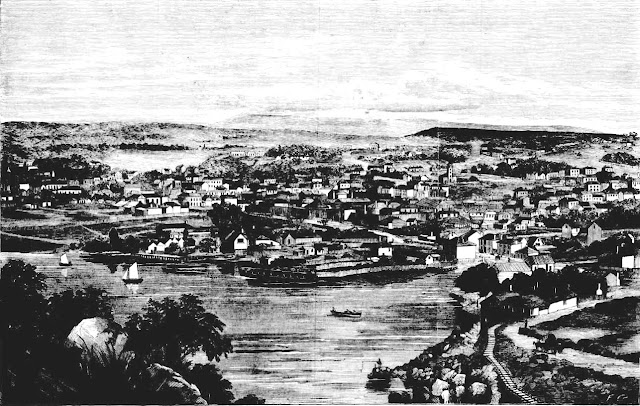Launceston, the second town of Tasmania, is situated on the northern side of the island, at the continence of the N. and S. Esk rivers. It contains a population of about 10,000. There are churches of every denomination, law courts, banks, barracks, public schools, newspaper offices, lots of hotels, fine shops well supplied; large stores, wharfs and quays. Opposite the Scotch Church there is a handsome group of public buildings, comprising a town hall, post office and custom house. The town boasts a splendid square with a fountain, which is acknowledged to be the finest in the Australian colonies, having been imported from Paris, where it was purchased at the Exhibition of 1851. A very prettily laid out botanical garden, quite close to the town, affords a recherche promenade. Several very elegant suburban villas and a great many gardens are also to be met with. The town is situated about 40 miles from the sea, and the navigation is extremely difficult, though vessels of seven or eight hundred tons often come to port. Steam communication is maintained every week with Melbourne and Sydney. From the summit of a bold craggy hill close to the town, a magnificent view may be obtained, which well repays the toil of the ascent. In the valley beneath is seen a large and busy town, remarkable for the order and regularity of its streets, hundreds of vessels crowding the wharfs, steamers and ships hastening to and from the port; while beyond is the extensive vale of the Tamar, through which the river, formed by the junction of the North and South Esk, is seen winding its way until, lost in the woody hills in the distance, it hurries on to the sea.
Source: Launceston (1867, May 20). The Australian News for Home Readers (Vic. : 1864 - 1867), p. 4.








No comments